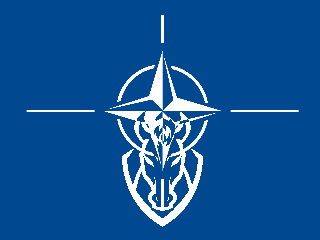| PIN: |
RANK CODE: |
ARMÉE DE TERRE
GARDIENS TERRITORIAUX
GENDARMERIE NATIONALE: |
ARMÉE DE L'AIR: |
FUSILIERS MARINS: |
MARINE NATIONALE: |
GARDE ROYAL: |
 |
OF-11 |
Maréchal de Prance |
 |
OF-10 |
Général de Division |
Général de Division aérienne |
Commandant Général des Marins |
Amiral |
Général de la Garde Royale |
 |
OF-09 |
Général de Brigade |
Général de Brigade aérienne |
Général |
Vice-Amiral |
Colonel de la Garde Royale |
 |
OF-08 |
Colonel en Chef |
Colonel en Chef des Marins |
Contre-Amiral |
Major de la Garde Royale |
 |
OF-07 |
Colonel |
Capitaine en chef |
Capitaine de la Garde Royale |
 |
OF-06 |
Lieutenant-colonel |
Lieutenant-colonel |
Capitaine de Vaissaeu |
Lieutenant de la Garde Royale |
 |
OF-05 |
Commandant |
Major en Chef des Fusiliers Marins |
Lieutenant de Vaissaeu |
Enseigne de la Garde Royale |
 |
OF-04 |
Capitaine-Major |
Major des Fusiliers Marins |
Lieutenant |
Aspirant officier de la Garde Royale |
 |
OF-03 |
Capitaine |
Capitaine des Fusiliers Marins |
Lieutenant Légère |
Élève officier de la Garde Royale |
 |
OF-02 |
Lieutenant |
Lieutenant des Fusiliers Marins |
Enseigne de première classe |
Intendant de la Garde Royale |
 |
OF-01 |
Sous-Lieutenant |
Enseigne |
Enseigne de deuxième classe |
Sous-Intendant de la Garde Royale |
 |
WO-05 |
Adjutant-Major |
Maître d'armes de la Garde Royale |
 |
WO-04 |
Adjutant Chef |
Mare/Stallion d'armes |
 |
WO-03 |
Adjudant 1re classe |
Sergent d'armes principal |
 |
WO-02 |
Adjudant 2e classe |
Sergent d'armes en chef |
 |
WO-01 |
Adjudant de 3e classe |
Sergent d'armes |
 |
OF-(D) |
Aspirant (de Terre, des Fusiliers Marins, de l'Air) |
Caporal d'armes |
 |
OR-12 |
Sergent Major Chef |
Maréchal des logis Major |
Maître chef des Marins |
Sergent Major Chef de la Guard Royale |
 |
OR-11 |
Sergent Major |
Maréchal des logis Chef de 1ère classe |
Maître chef de Vaisseau |
Sergent Major de la Guard Royale |
 |
OR-10 |
Sergent Chef |
Maréchal des logis Chef de 2ème classe |
Maître chef de première classe |
Sergent Chef de la Guard Royale |
 |
OR-09 |
Sergent de première classe |
Maréchal des logis Chef |
Maître chef de deuxième classe |
Sergent de première classe de la Guard Royale |
 |
OR-08 |
Sergent de deuxième classe |
Maréchal des logis |
Maître chef |
Sergent de deuxième classe de la Guard Royale |
 |
OR-07 |
Sergent |
Brigadier-chef de première classe |
Maître |
Brigadier Major de la Guard Royale |
 |
OR-06 |
Caporal-Major |
Brigadier-chef de deuxième classe |
Second-Maître |
Brigadier-chef de la Guard Royale |
 |
OR-05 |
Caporal Chef |
Brigadier-chef |
Troisième-maître |
Garde royale supérieure |
 |
OR-04 |
Caporal |
Brigadier |
Quartier-maître |
Maître de la Guard Royale |
 |
OR-03 |
Soldat de première classe |
Aviateur de première classe |
Fusilier de première classe |
Matelot 1ère |
Guard Royale de première classe |
 |
OR-02 |
Soldat de deuxième classe |
Aviateur de deuxième classe |
Fusilier de deuxième classe |
Matelot 2ème |
Guard Royale de deuxième classe |
 |
OR-01 |
Recrue |
Aviateur Recrue |
Recrue des Fusiliers Marins |
Mousse |
Guard Royale |


